
Food and bewerage
A
Aflatoxins and ochratoxin by HPLC/FLD (APK #344)
Aflatoxin is a Group 1 carcinogen and is a product of mould. Ochratoxin is a mycotoxin produced by the fungus Aspergillus ochraceous and also by several species of Penicillium fungi. It is considered a potential carcinogen and has been known to cause kidney damage. All these mycotoxins are monitored worldwide and allowed concentration limits depend not only on the territory, but also on the food/feed matrix and are given by local administrations.
Aflatoxins by LC/MS (APK #343)
Aflatoxins are Group 1 carcinogens and are a natural product of mould. Mycotoxines are monitored worldwide and allowed concentration limits depend not only on the territory, but also on the food/feed matrix and are given by local administrations.
- APP_NOTE 343_Mycotoxines_LCMS
1622 kB
Alcaloids - Xanthine derivatives (APK #293)
Xanthine alkaloids occur naturally in various plants, such as cocoa, tea and coffee tree. They are commonly used for their effects as mild stimulants. Xanthine alkaloids are monitored in food and drinks, e.g. in chocolate, cocoa powder, and energy drinks.
Analysis of sugars (APK #537)
The analysis of saccharides and sugar alcohol is one of the most common criteria in food and beverage analyses in the QC laboratories of manufacturers and the subject of monitoring from authorities. This analysis is also used to detect food and beverage adulteration.
- APP_NOTE_537_Analysis of sugars
2091 kB
D
Denatonium benzoate in ethanol (APK #294)
Denatonium benzoate is considered the most bitter compound by the whole world, which is why it is used as a denaturant of ethanol to prevent its misuse. This application shows fast isocratic elution to enhance productivity in the laboratory.
- app-note-294-denatonium-benzoate
2230 kB
F
Food supplements (APK #473)
Food supplements are now trending worldwide. Concentrated sources of nutrients, vitamins and aminoacids are used to support the normal nutritional balance and healthy lifestyle. This application shows the simultaneous determination of cAMP, phenylalanine, tryptophan, FAD, malic and citric acids by accurate HPLC method.
- APP_NOTE_473_Food supplements
2855 kB
H
HMF in Syrup (APK #312)
5-Hydroxymethylfurfural (5-HMF) is formed from fructose or glucose by the heat treatment of food. HMF and its derivates/metabolites are genotoxic, mutagenic and may be carcinogenic, which is why HMF is analysed in various food matrices, such as in fruit and vegetable products, instant coffee and honey.
- app-note-312-hmf-in-syrup
1535 kB
L
Lactoferrin in goat‘s milk (APK #405)
Lactoferrin (LT) is a glycoprotein, which is one of the group of transferrins. It is an iron-binding protein with a mass of 80 kDa. Lactoferrin has microbial properties against many microorganisms (bacteria, viruses and fungi, including parasites). It is one of the non-specific components of the immune system and has anticancer and anti-inflammatory properties.
Lactoferrin is widely represented in various animal fluids, mainly milk, saliva and tears. It is separated from bovine milk to produce this key ingredients of infant formulas. Lactoferrin is also used as a food supplement to support the natural immune system, gut microbiome and healthy skin.
Lactoferrin in milk (APK #400)
Lactoferrin (LT) is a glycoprotein, which is one of the group of transferrins. It is an iron-binding protein with a mass of 80 kDa. Lactoferrin has microbial properties against many microorganisms (bacteria, viruses and fungi, including parasites). It is one of the non-specific components of the immune system and has anticancer and anti-inflammatory properties.
Lactoferrin is widely represented in various animal fluids, mainly milk, saliva and tears. It is separated from bovine milk to produce this key ingredients of infant formulas. Lactoferrin is also used as a food supplement to support the natural immune system, gut microbiome and healthy skin.
Lutein in food supplements (APK #413)
Lutein and Zeaxanthin are carotenoids used in various dietary supplements. The task of this application was to develop a method that replaces the dichloromethane mobile phase with non-chlorinated solvents.
M
Monosaccharides, disaccharides and sugar alcohol (APK #354)
The analysis of saccharides and sugar alcohol is one of the most common criteria in food and beverage analyses in the QC departments of manufacturers and the monitoring of authorities. This analysis of sugars and sugar alcohols is also used to detect food and beverage adulteration.
O
Organic acids (APK #355)
The identification and quantitative analysis of major organic acids in fruits and vegetables is considered very important for the food and beverage industry. Organic acids play a significant role thanks to their influence on flavour, stability and keeping quality. Organic acids are generated during the aerobic oxidation of carbohydrates, proteins and fats in most biological systems.
- app-note-355-organic-acids
1248 kB
Organic acids (APK #439)
This application shows the determination of tartaric, malic, shikimic, lactic, citric and succinic acids. The quantity balance of these compounds influences on taste and flavor of wines and fruit juices. The ASTRA® column provides the simultaneous determination of organic acids with good peaks resolution at low limits of the concentrations.
- APP_NOTE 439_Organic acids
1992 kB
P
Preservatives in caffeinated beverages (APK #390)
Sodium and potassium salts of benzoic acid and sorbic acid are well-known food preservatives. The permitted amount in food is strictly regulated with the level depending on the food group. As an example, European regulation EC 1333/2008 sets the rules on food additives: definitions, conditions of use, labelling and procedures.
Preservatives in syrup (APK #356)
Sodium and potassium salts of benzoic acid and sorbic acid are well-known food preservatives. The permitted amount in food is strictly regulated with the level depending on the food group. As an example, European regulation EC 1333/2008 sets the rules on food additives: definitions, conditions of use, labelling and procedures.
S
Stevia glycosides (APK #387)
Stevia rebaudiana Bertoni is a plant used for its sweet taste. It includes glycosides, which are used as sweeteners in the food industry.
- APP_NOTE 387_Stevia glycosides
1467 kB
Sugars and Organic acids in Balsamic vinegar (APK #561)
Balsamic vinegar is celebrated for its rich flavor, which is the result of a delicate balance between sugars and organic acids. Analyzing these components is essential for producers aiming to maintain quality and create distinct flavor profiles. Sugars, primarily glucose and fructose, contribute sweetness, while organic acids, notably acetic acid, provide the characteristic tang. Understanding the levels of these compounds helps ensure consistency across batches, enhances the overall taste, and allows for adjustments that create a harmonious balance. Additionally, rigorous analysis supports quality control and regulatory compliance. Many regions impose strict standards on balsamic vinegar production, and regular testing ensures adherence to these guidelines, fostering consumer confidence in the product.
In summary, the analysis of sugars and organic acids in balsamic vinegar is crucial for crafting high-quality products that delight consumers and uphold authenticity in this beloved condiment.
Sugars control in tomatoes and ketchups (APK #555)
A taste of tomato products depends on content of the main food sugars, such as sucrose, glucose and fructose. Sugars are analysed continuously during the products manufacturing at the different steps of a process. The content of sugars in tomatoes is highly dependent on the geographical origin, ripeness and transportation conditions. This application highlights the analysis of food sugars in several kinds of tomatoes and ketchups using ASTRA® Sugar Ca column.
Sugars in alcoholic beverages (APK #554)
Glucose and fructose are the major fermentable sugars presented in alcoholic beverages. Accurate determination of sugars in alcoholic fermentation process is a key point in the winemaking. Column ASTRA® Sugar Ca provides a perfect estimation of variable amounts of sugars in fermented alcoholic beverages.
Sugars in honey (APK #552)
Honey has been used since ancient times as a food and in medicine. Its composition is highly variable depending on its botanical and geographical origin. It is mainly composed of a mixture of different sugars, which daily intake should be controlled due to the nutritional reasons. In this application the chromatographic profiles of sugars in several honey varieties are shown.
- APP_NOTE_552_Sugars in honey
2284 kB
Sugars in non-alcoholic beverages (APK #553)
Non-alcoholic beverages are popular among children and adolescents. Due to high content, the sugars separation and quantification in these products are often challenging. In the tested non-alcoholic beverages, a several sugars, such as sucrose, glucose and fructose, were detected in a different proportions.
Sweeteners and organic acids (APK#313)
This application shows the separation of three groups of compounds in parallel: non-nutritive sweeteners, organic acids and xanthine derivatives.
V
Vitamin E and provitamin A in food supplements (APK #392)
Beta-carotene is one of the group of carotenoids. It is a precursor of Vitamin A and plays a significant role as an antioxidant. Alpha-tocoferol is a type of Vitamin E. This applications shows the separation of both compounds in a sample of a food supplement.
Vitamins A and E (APK #383)
Fat-soluble vitamins are monitored not only in patient’s samples, but are also the subject of quality control in various food and dietary supplements.
- APP_NOTE 383_Vitamins A and E
1441 kB
Vitamins B (APK #384)
The group of water-soluble B vitamins is widely monitored in dietary supplements and in food. They play an important role in cell metabolism and the synthesis of red blood cells. This application shows the HPLC separation of B1, B2, B3, B6 and B12 vitamins.
- app-note-384-vitamins-b
1873 kB
- Pokaż wszystko
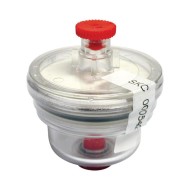
DPM cassette with internal Sub-micron Impactor for Elementar Carbon Analysis, 10 pcs
Dostępność: na zapytanieNa życzenie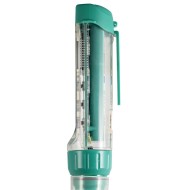
ORP 5 tester kit, incl. 1 extra cap for calibration, 468 mV redox standard
Dostępność: na zapytanie132 €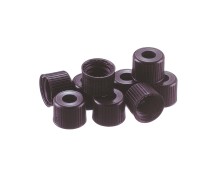
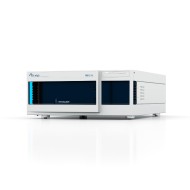
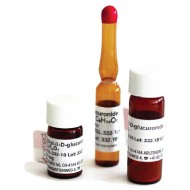
d,l-Methamphetamine-D5.HCl, 1mg base/ml, solution in MeOH, 1 ml
Dostępność: na zapytanieNa życzenie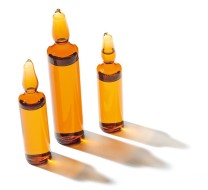
QuEChERS Internal Std Mix for LC/MS-MS Analysis (Nicarbazin), 10µg/ml, ACN, 5ml
Dostępność: na zapytanieNa życzenie
YMC UltraHT Hydroshpere C18, S-2µm, 12nm Microbore HPLC Column, 100 x 3.0mm
Dostępność: na zapytanieNa życzenie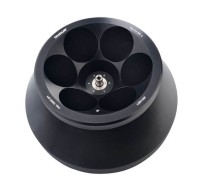





 0
0
 0
0